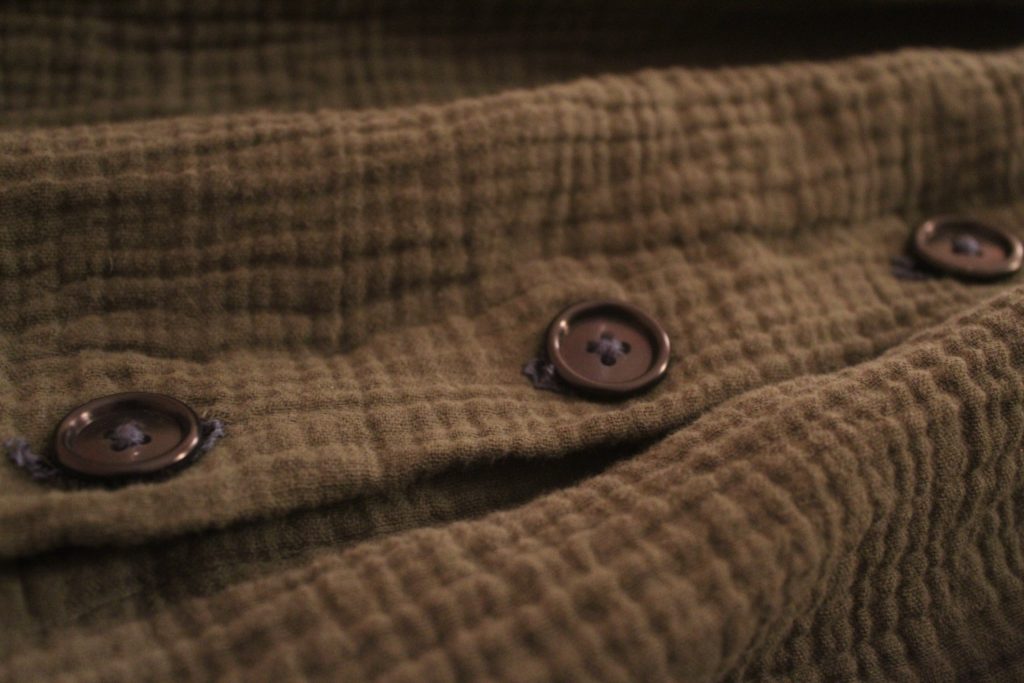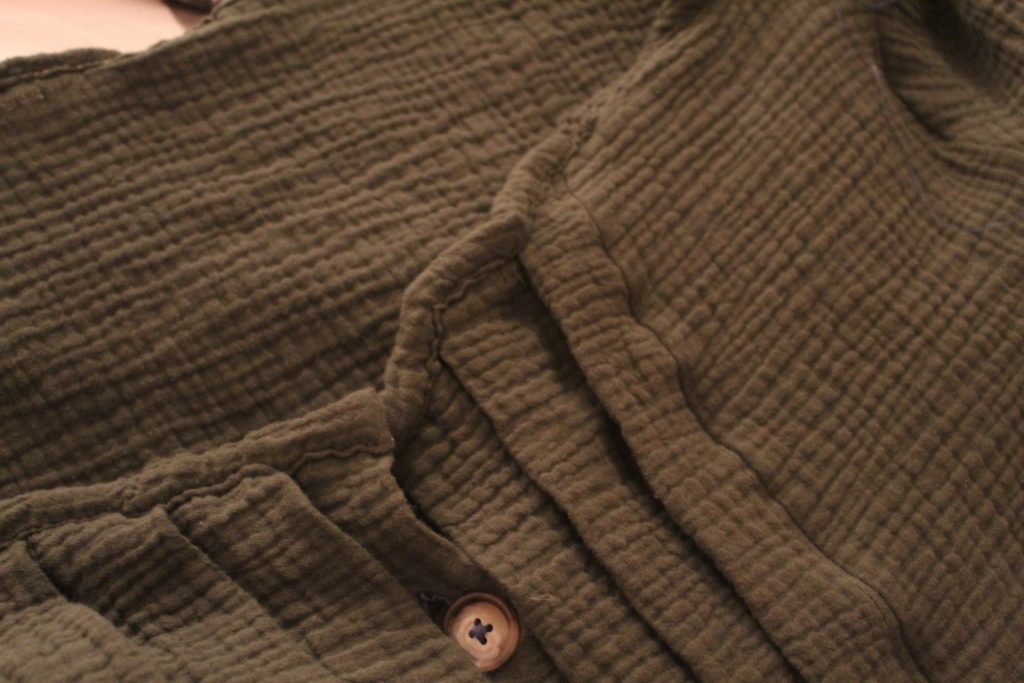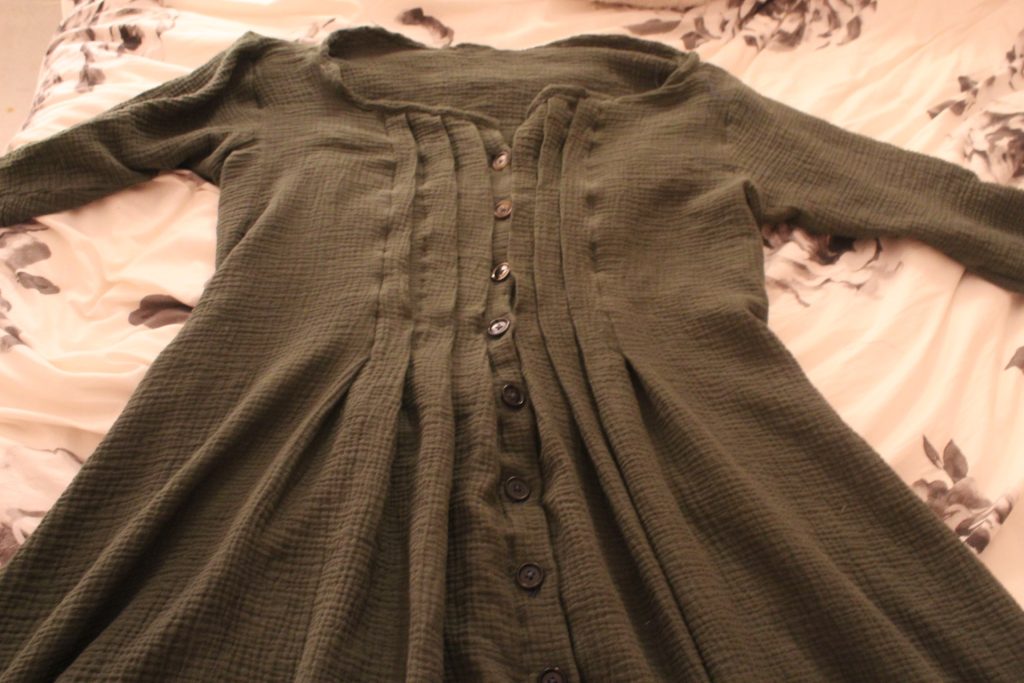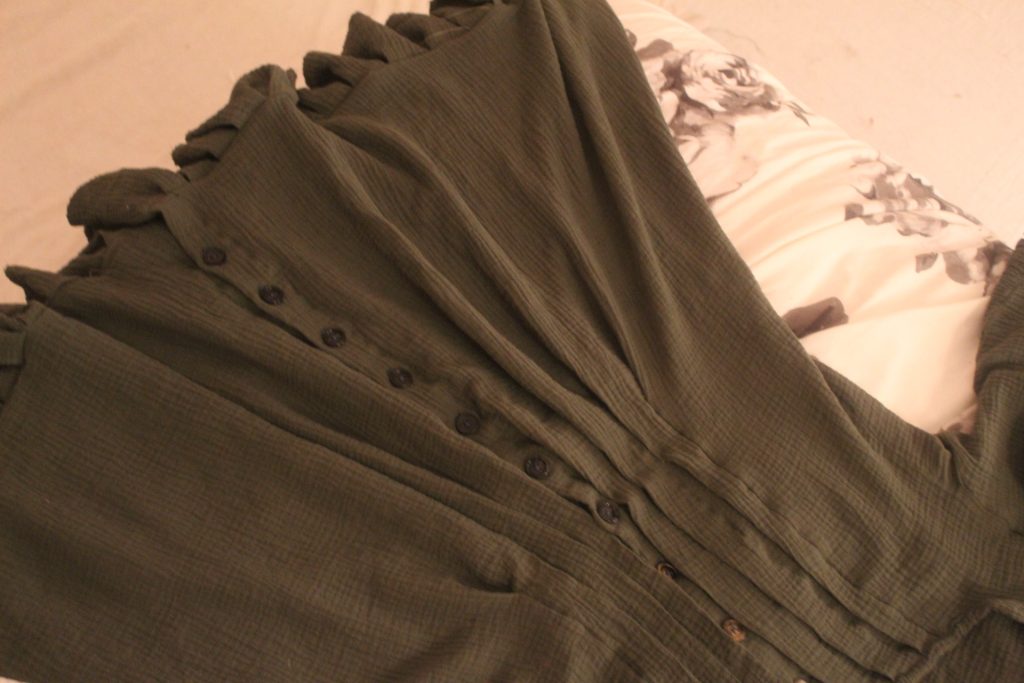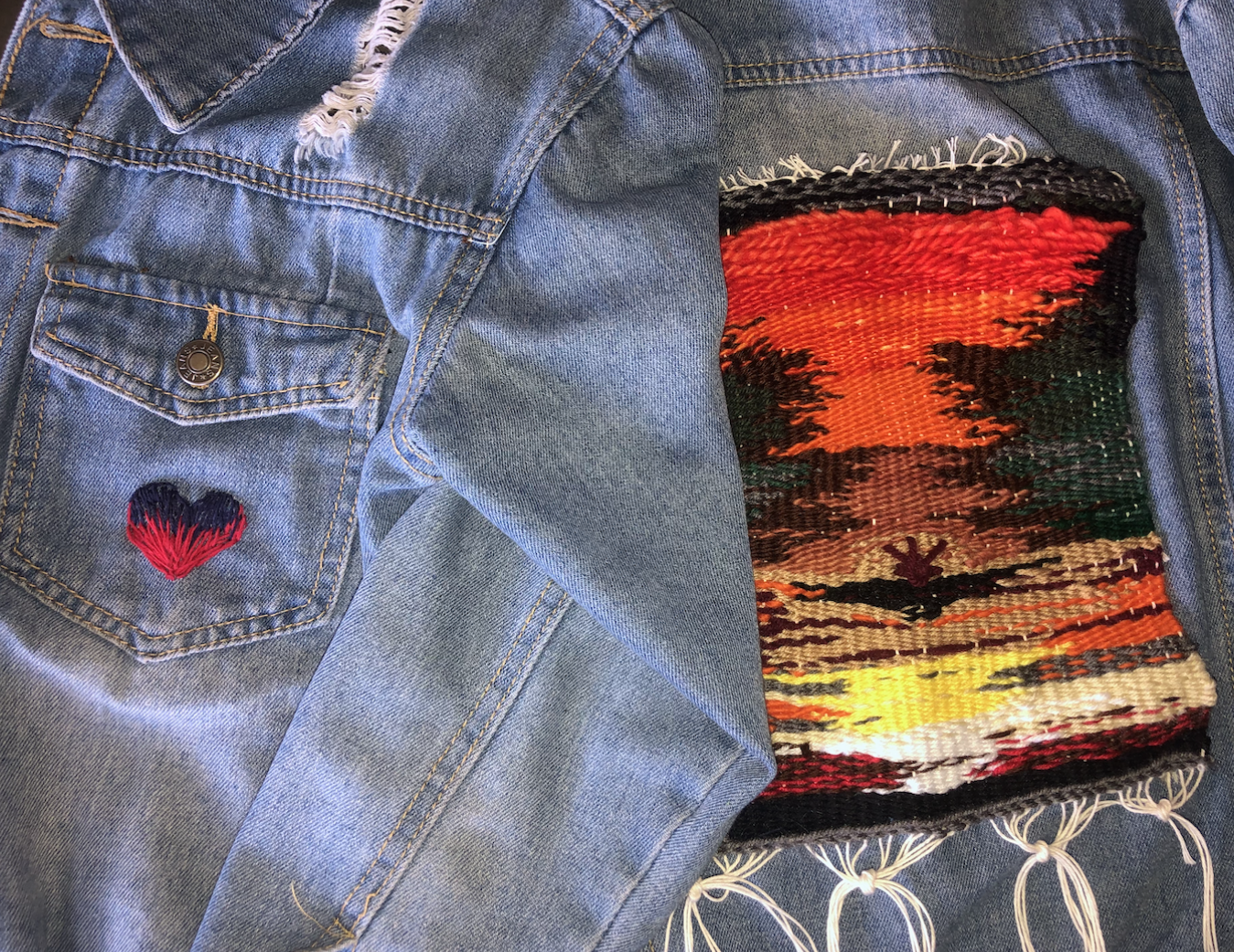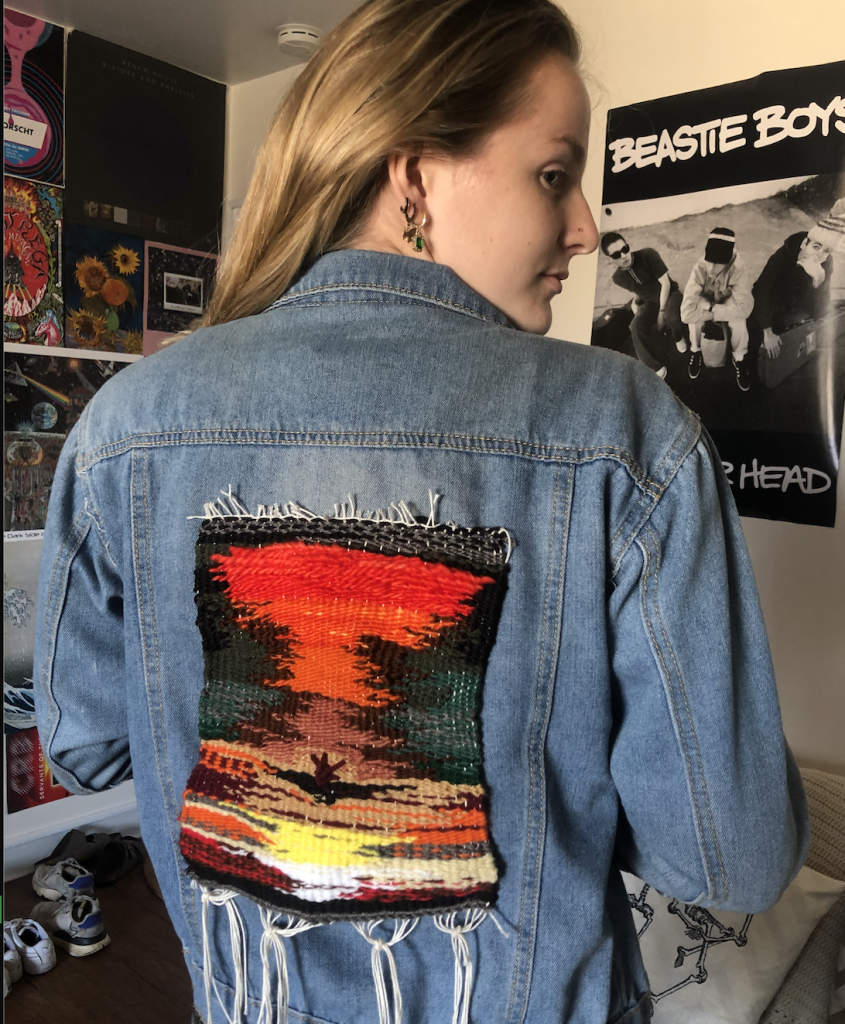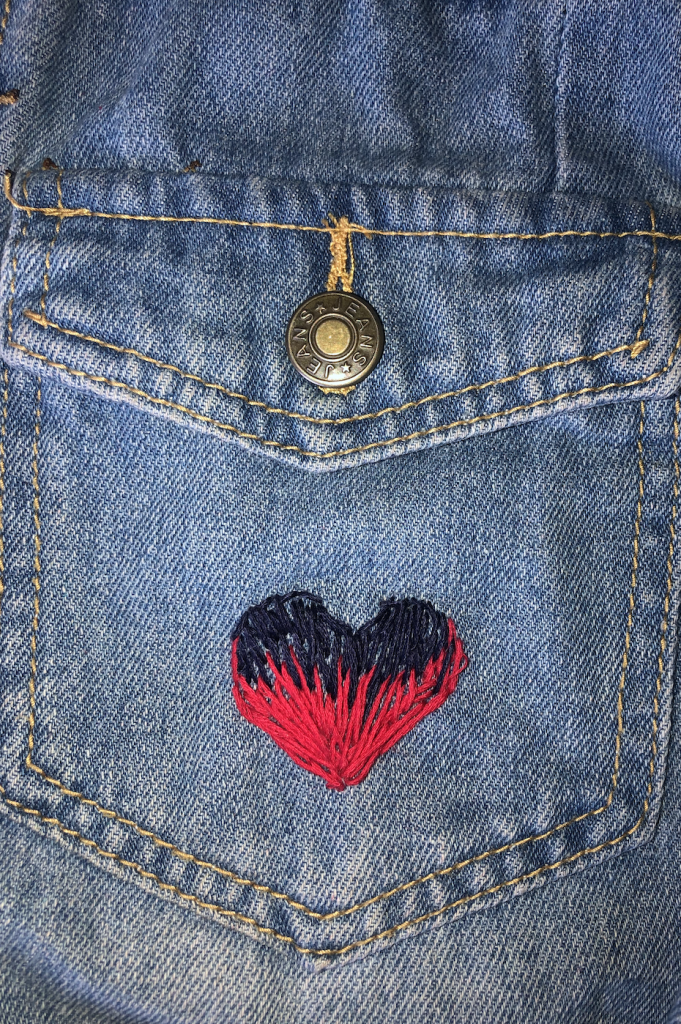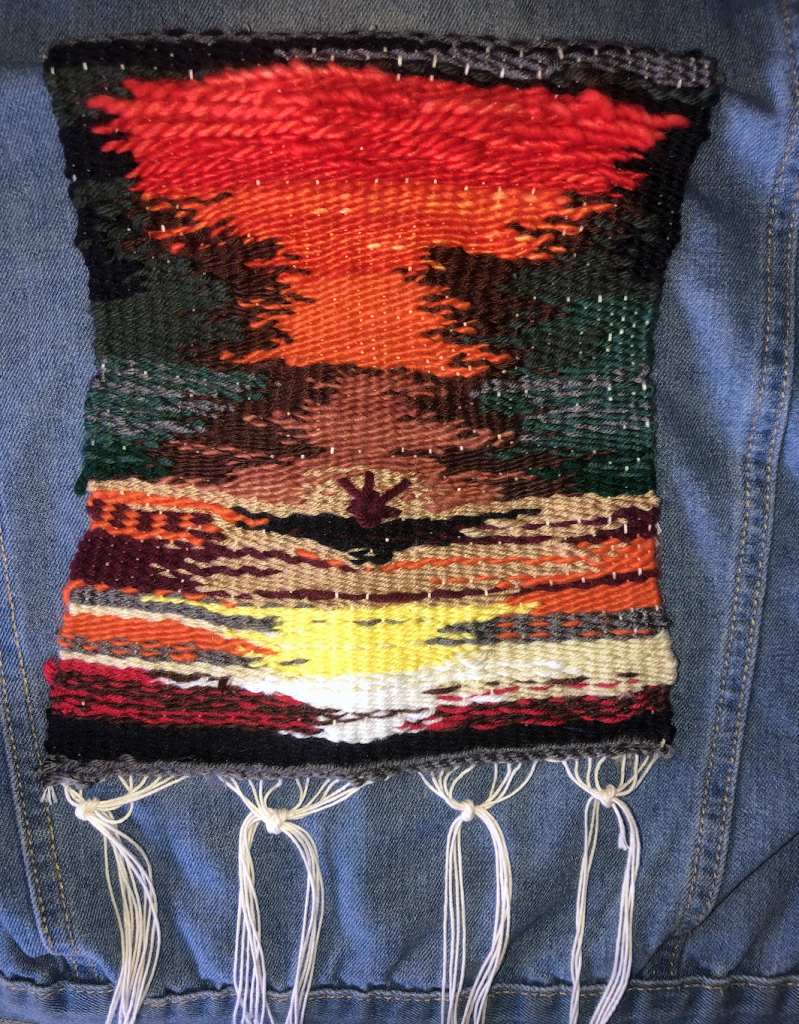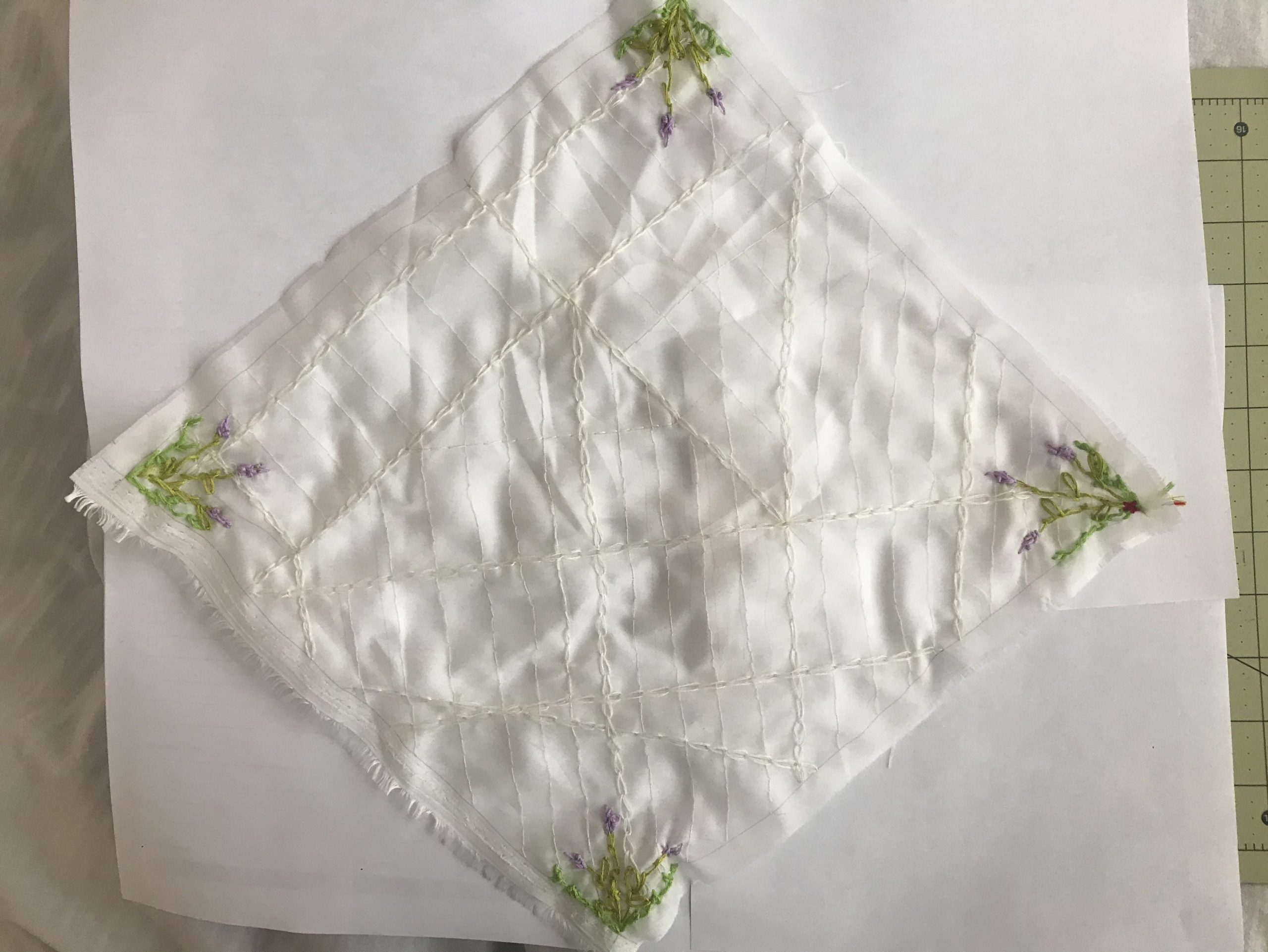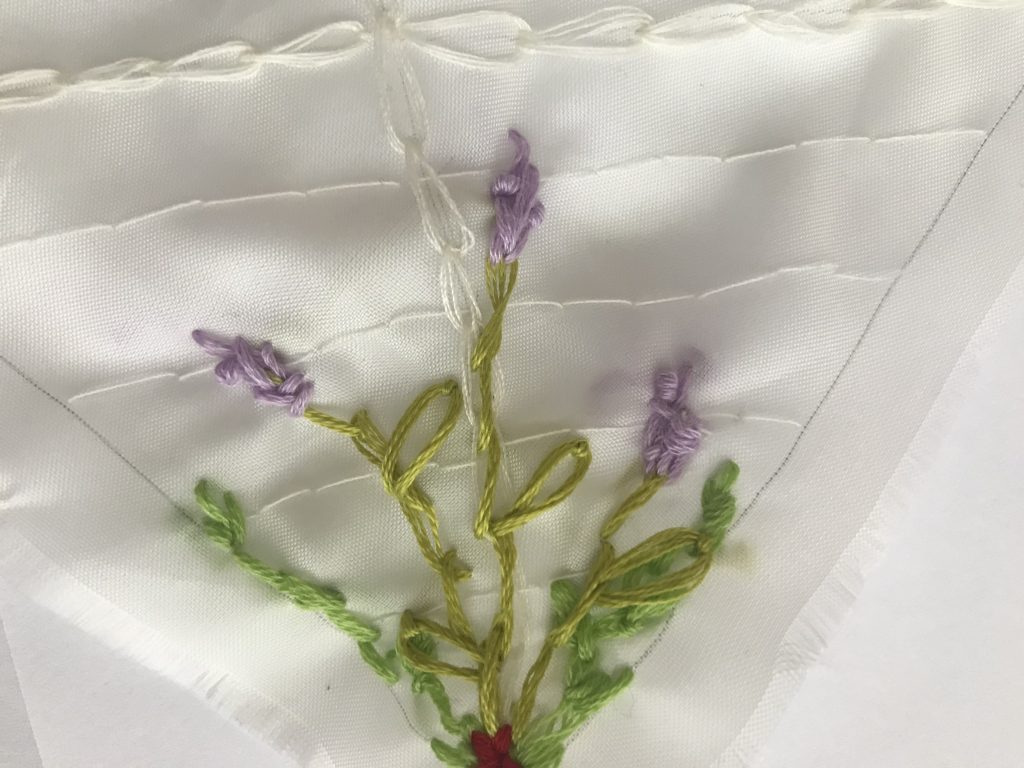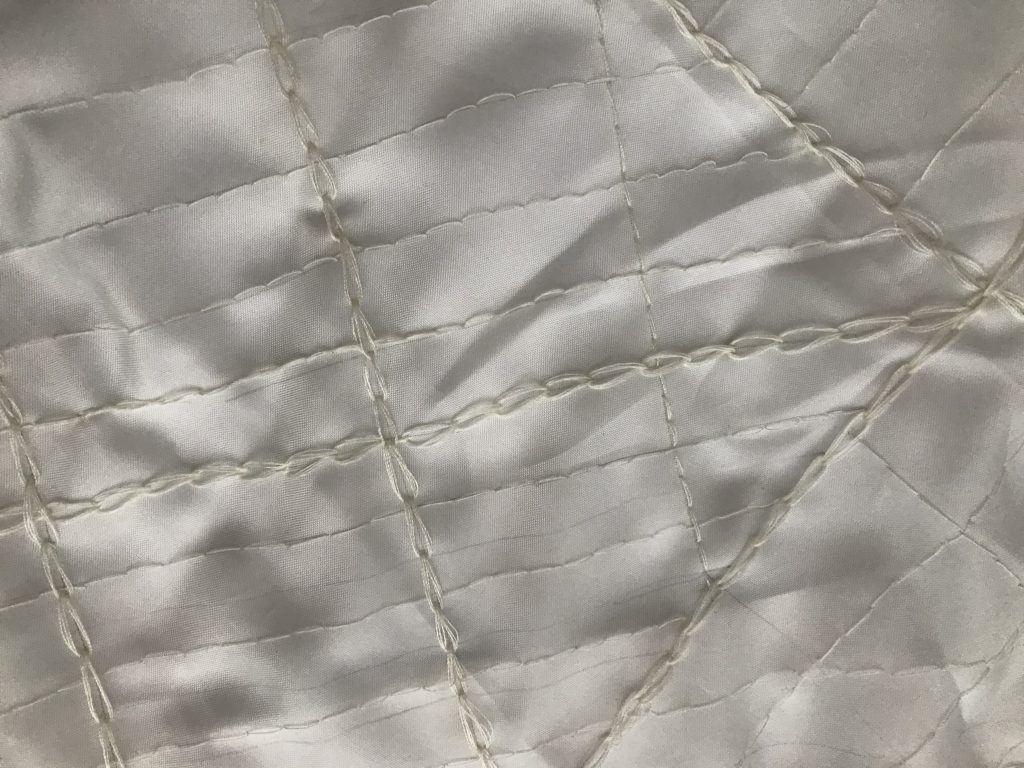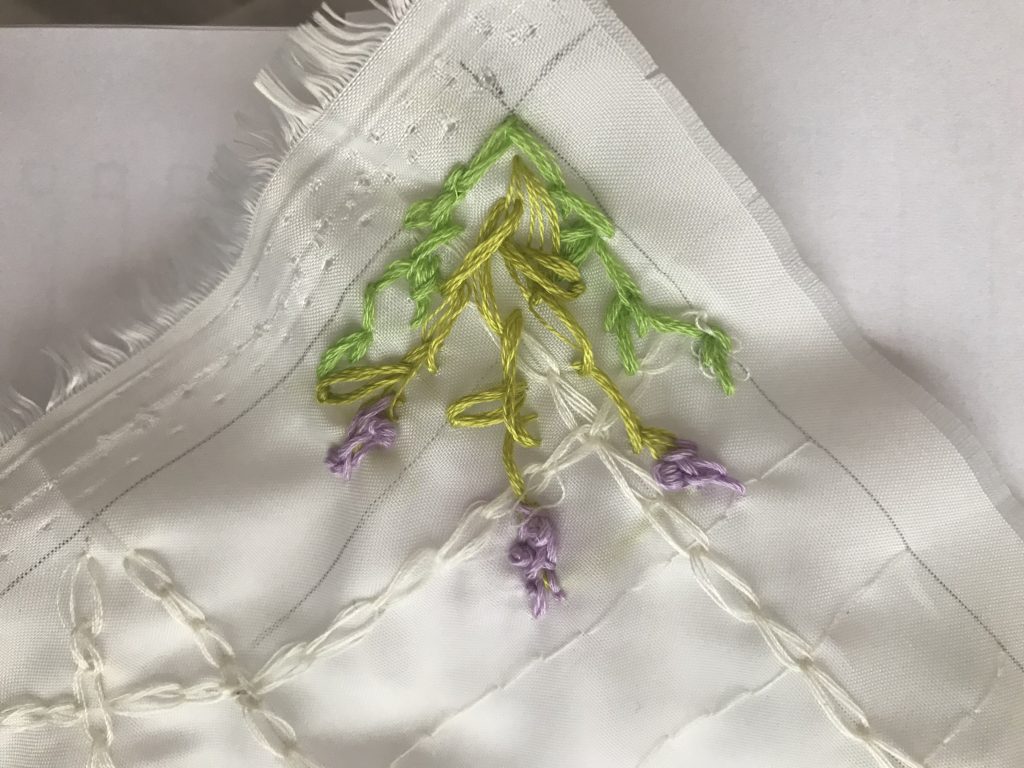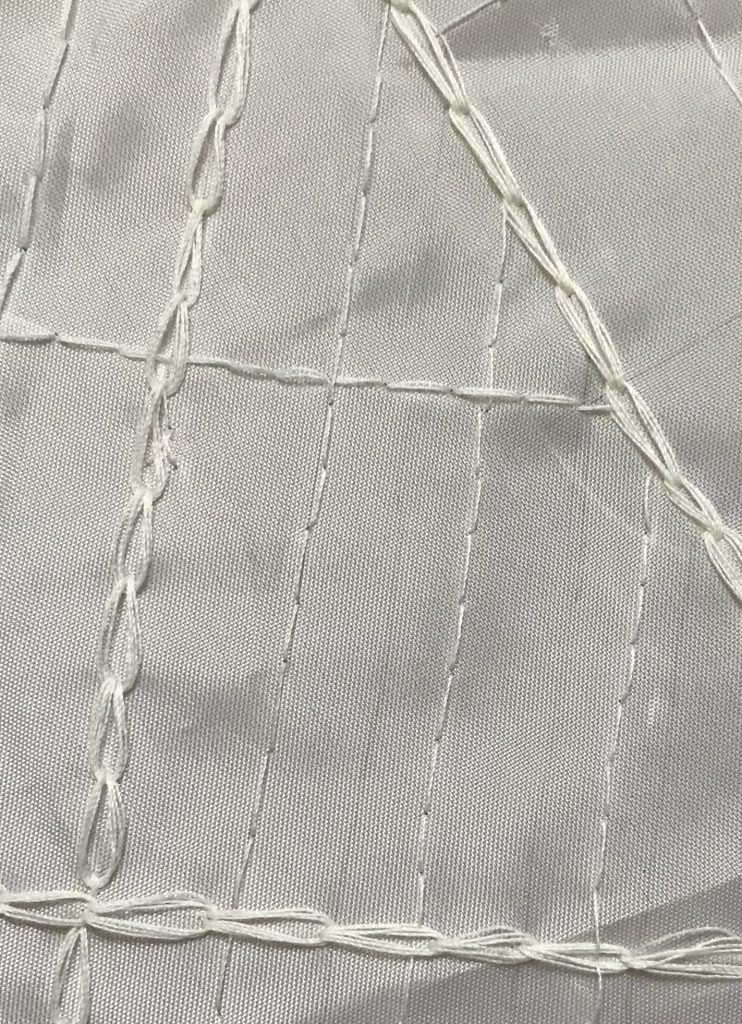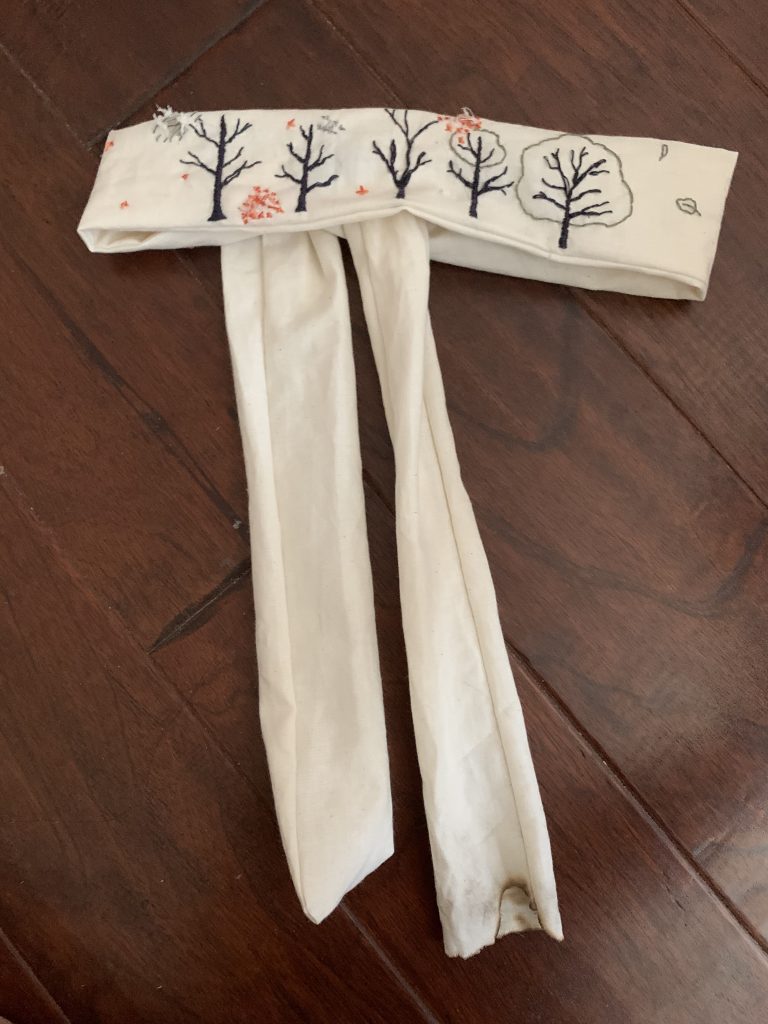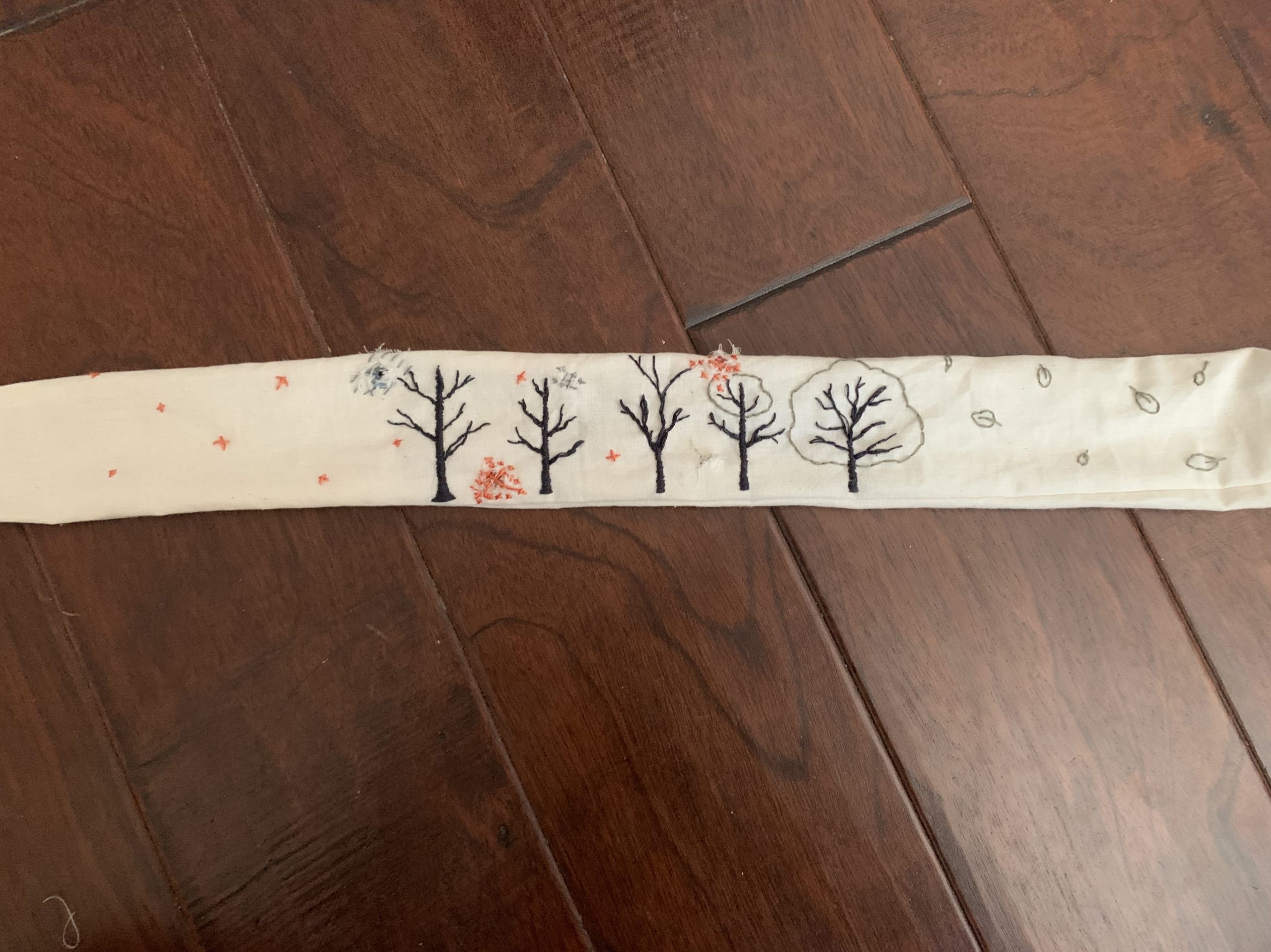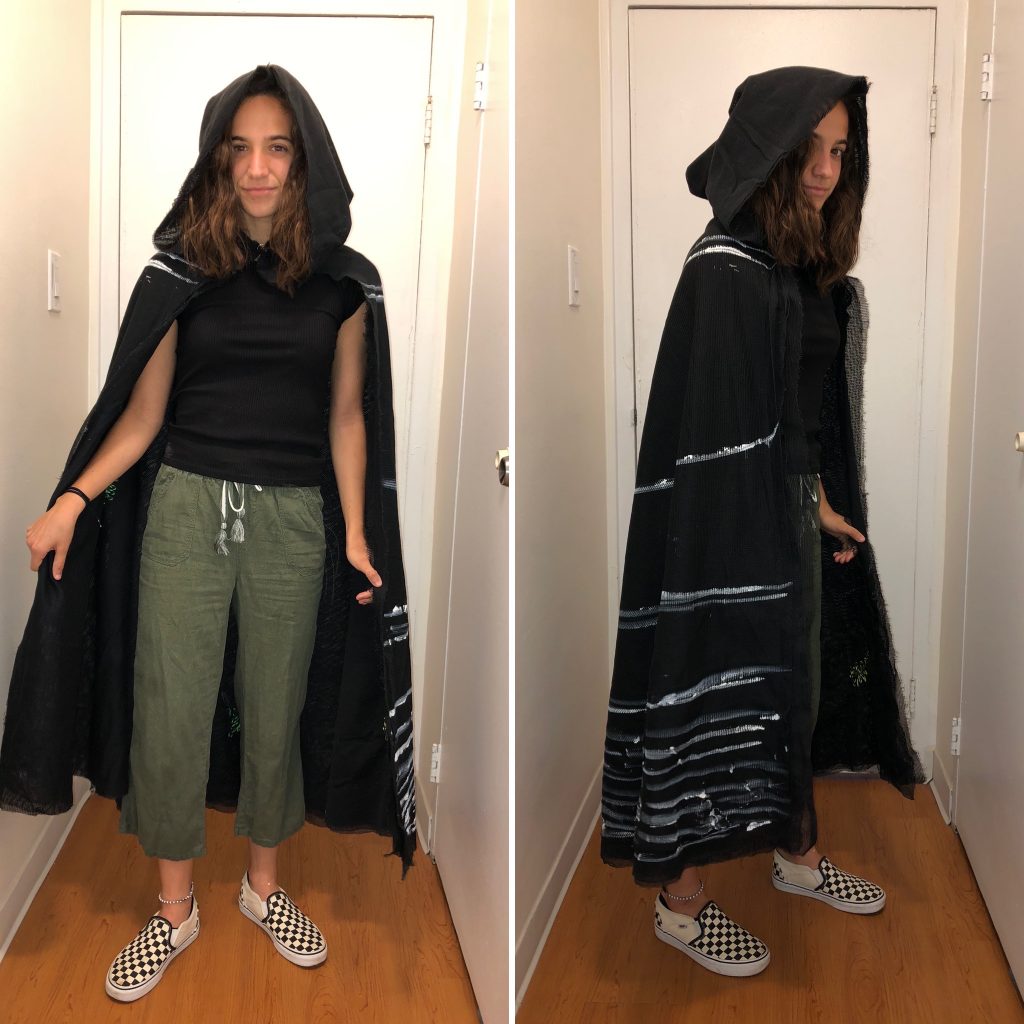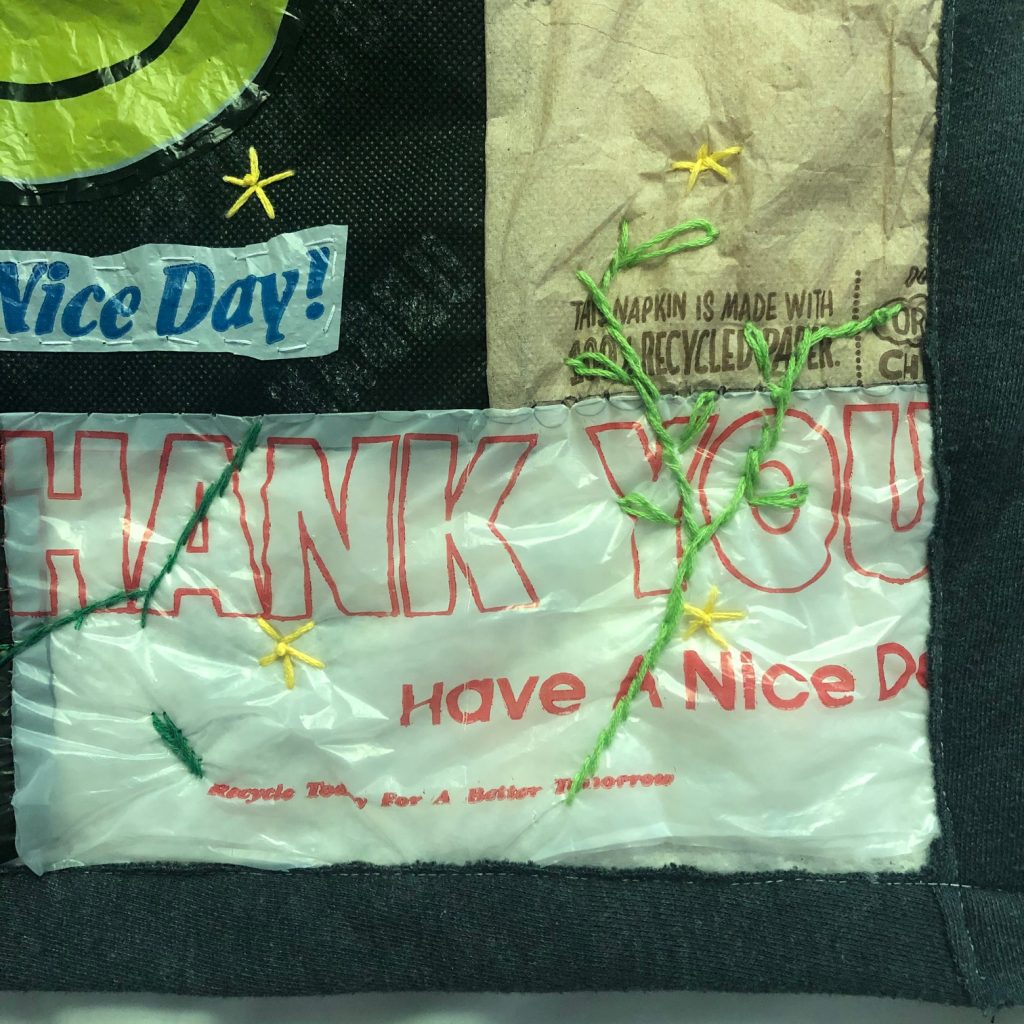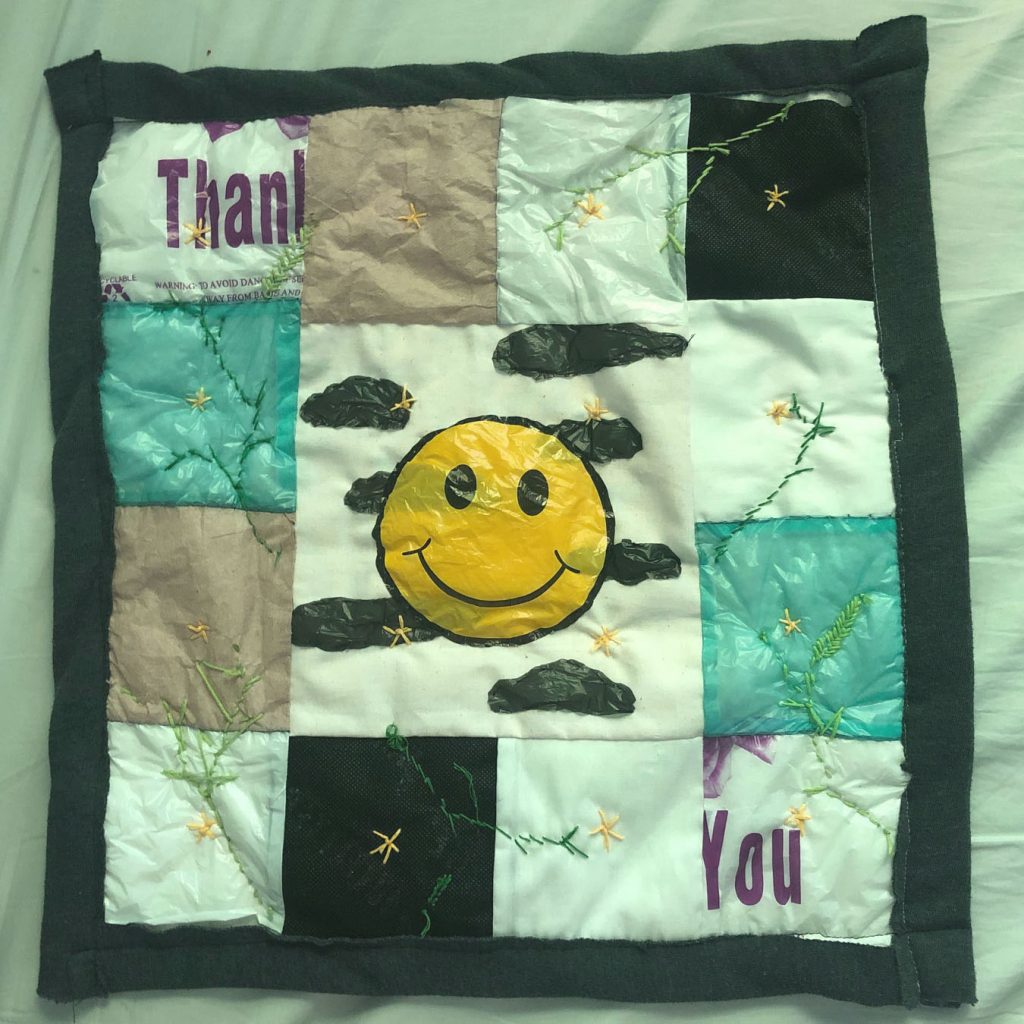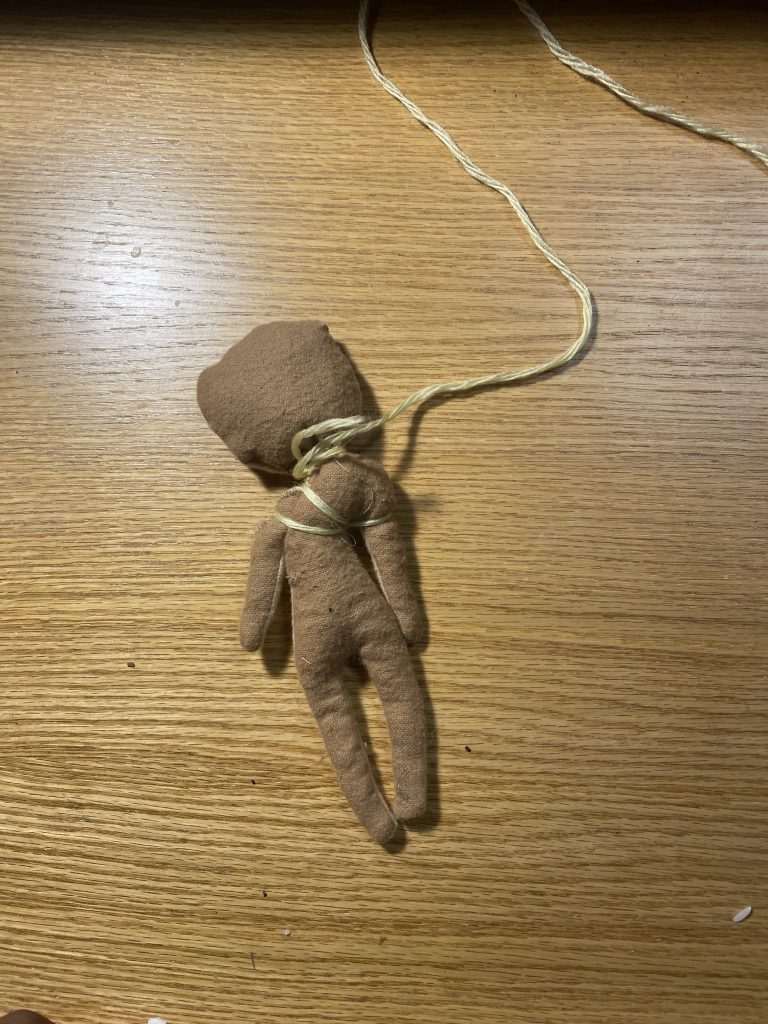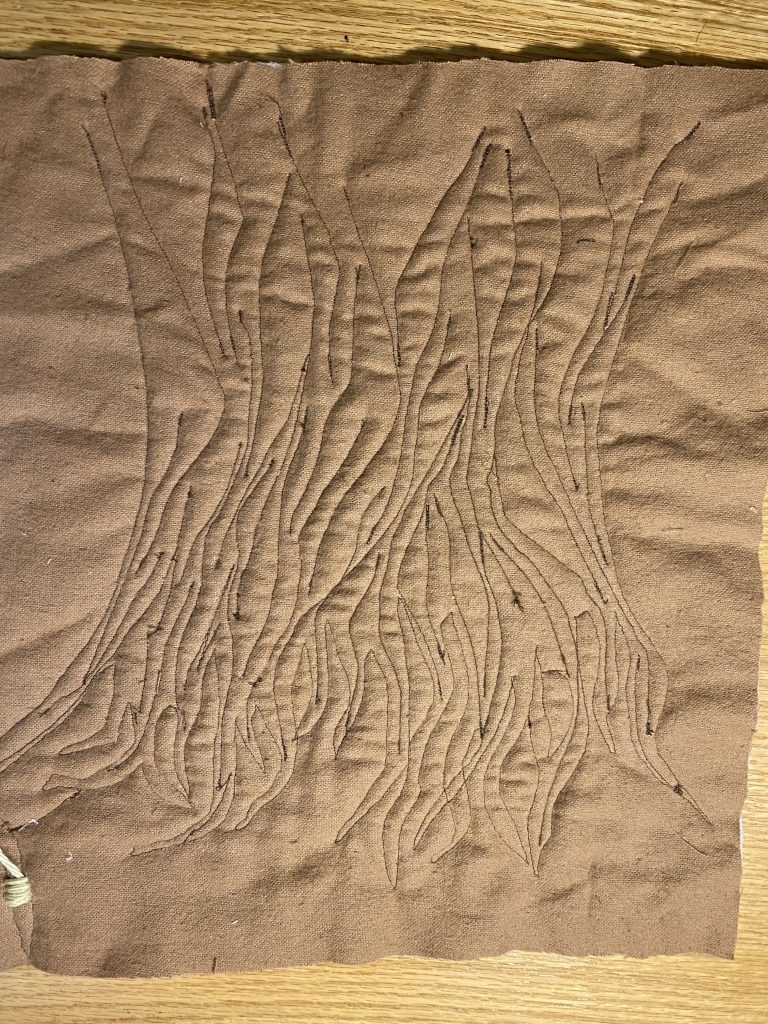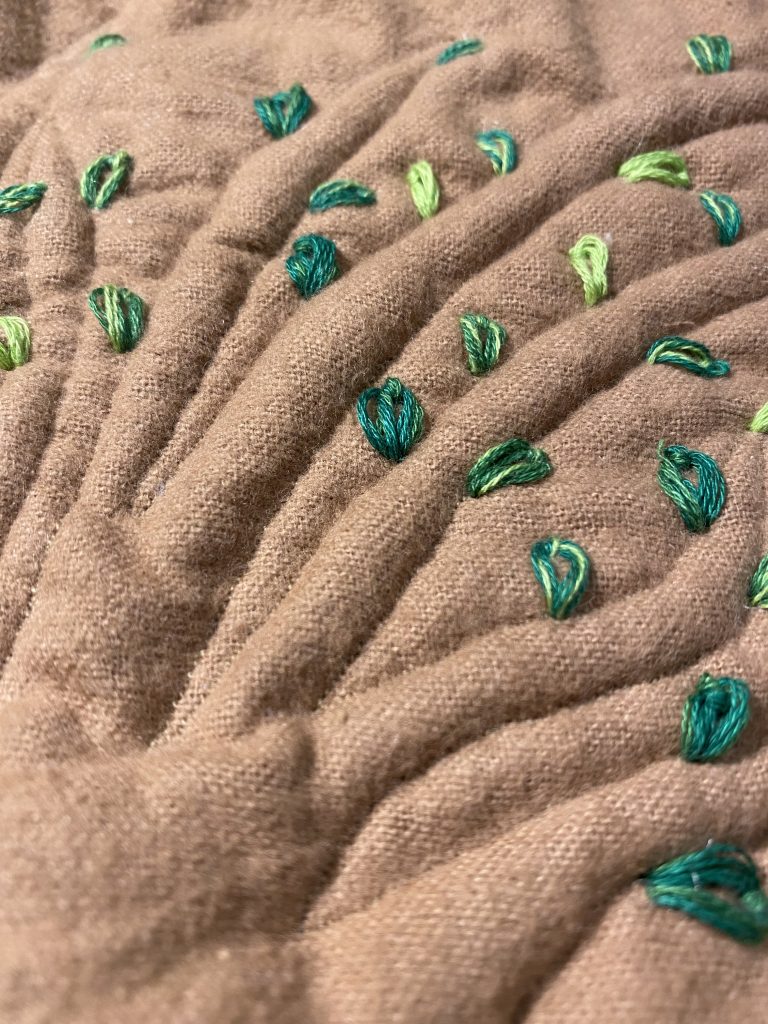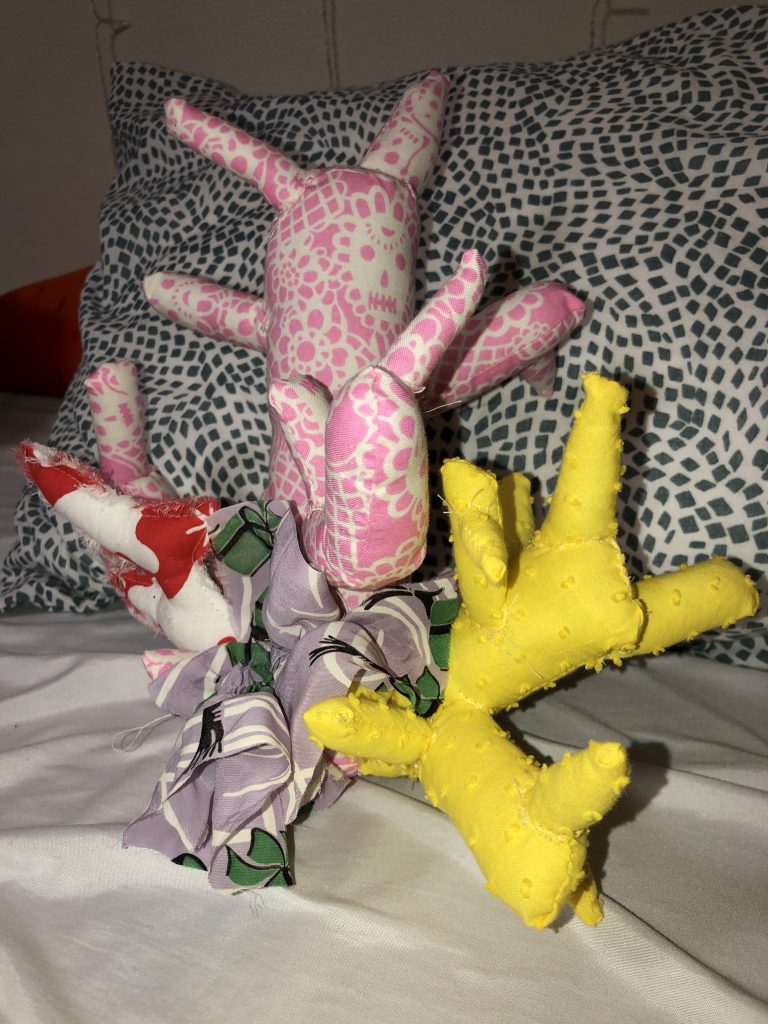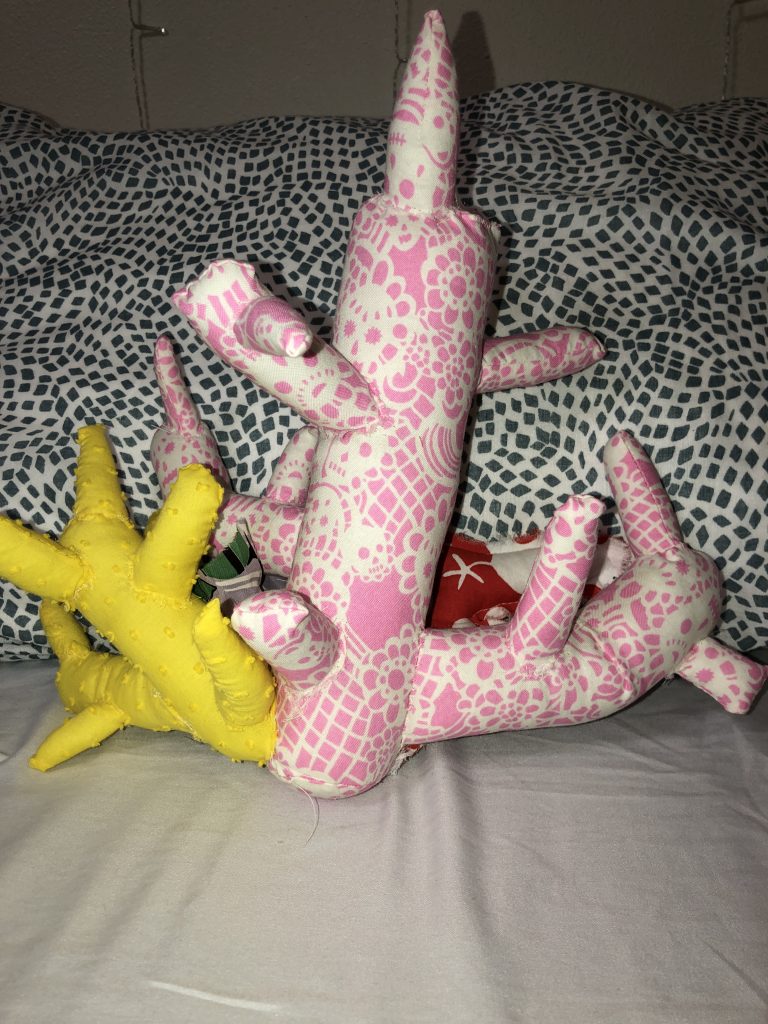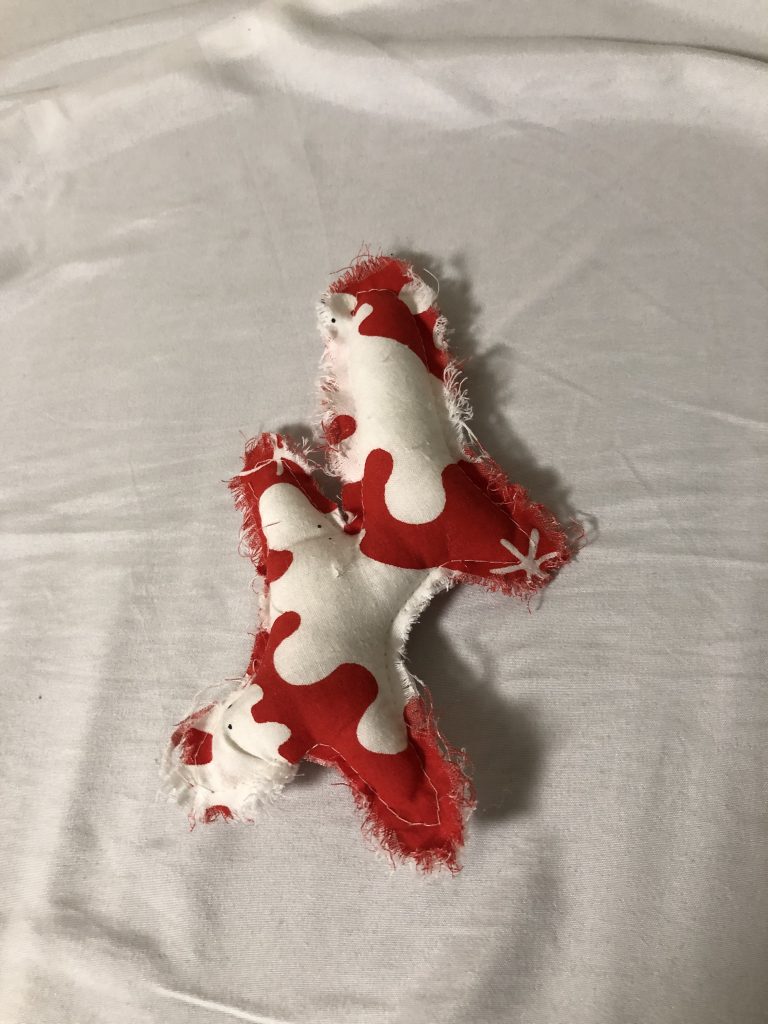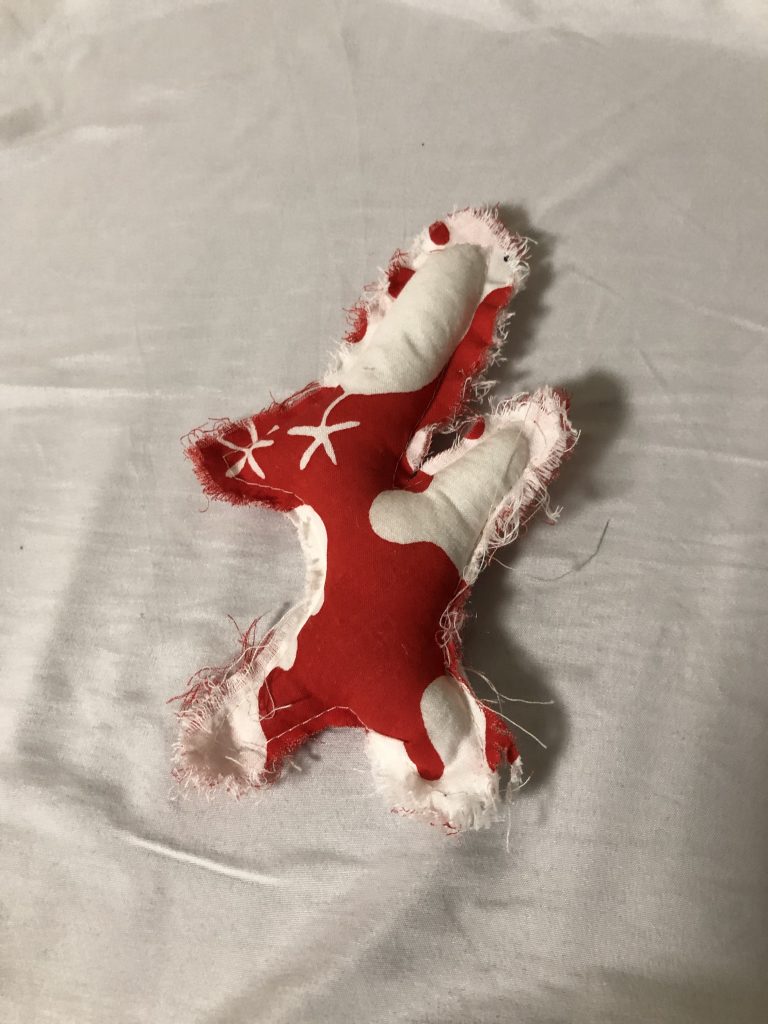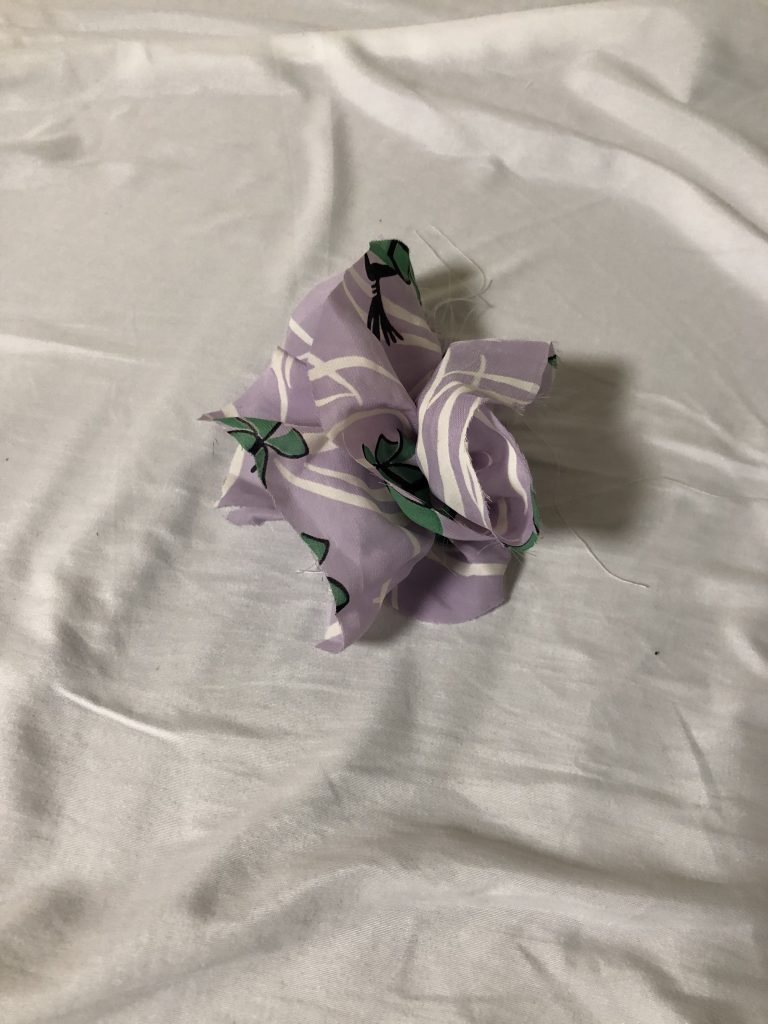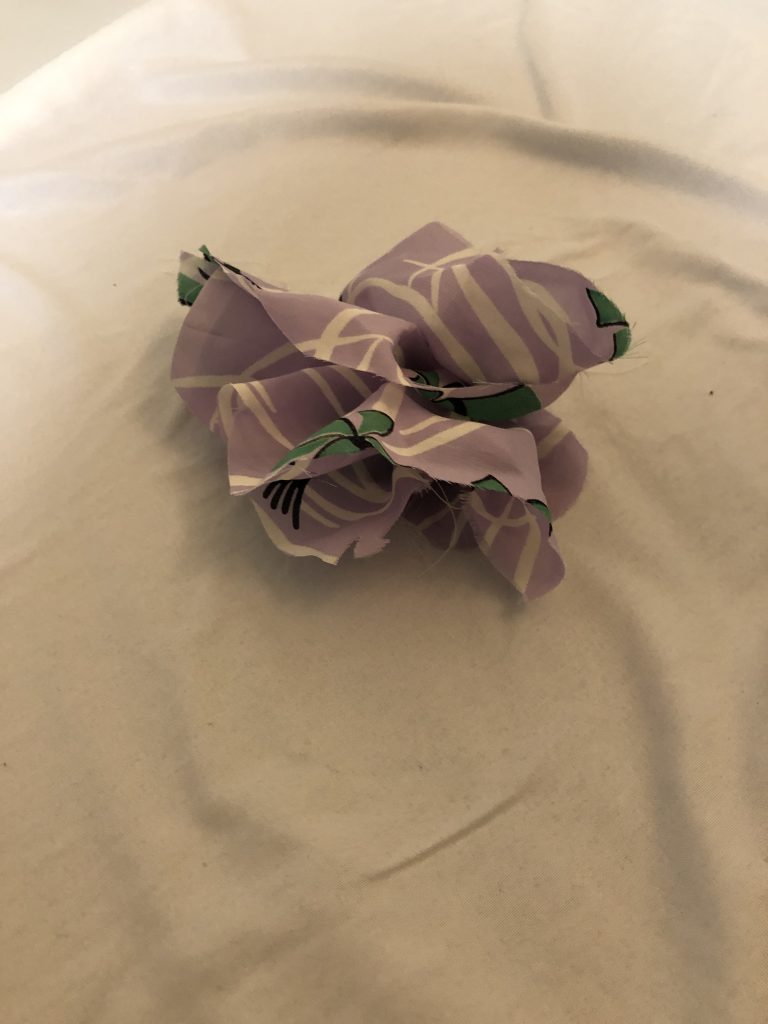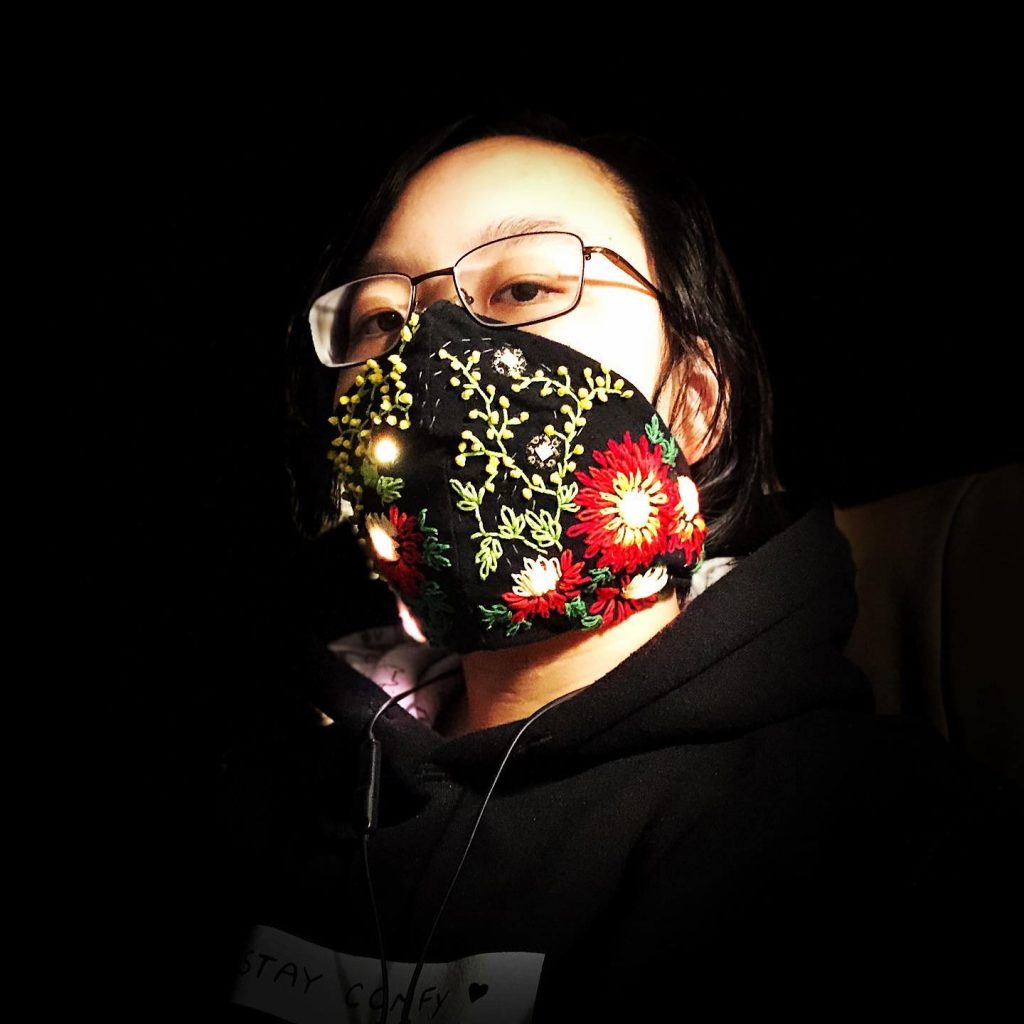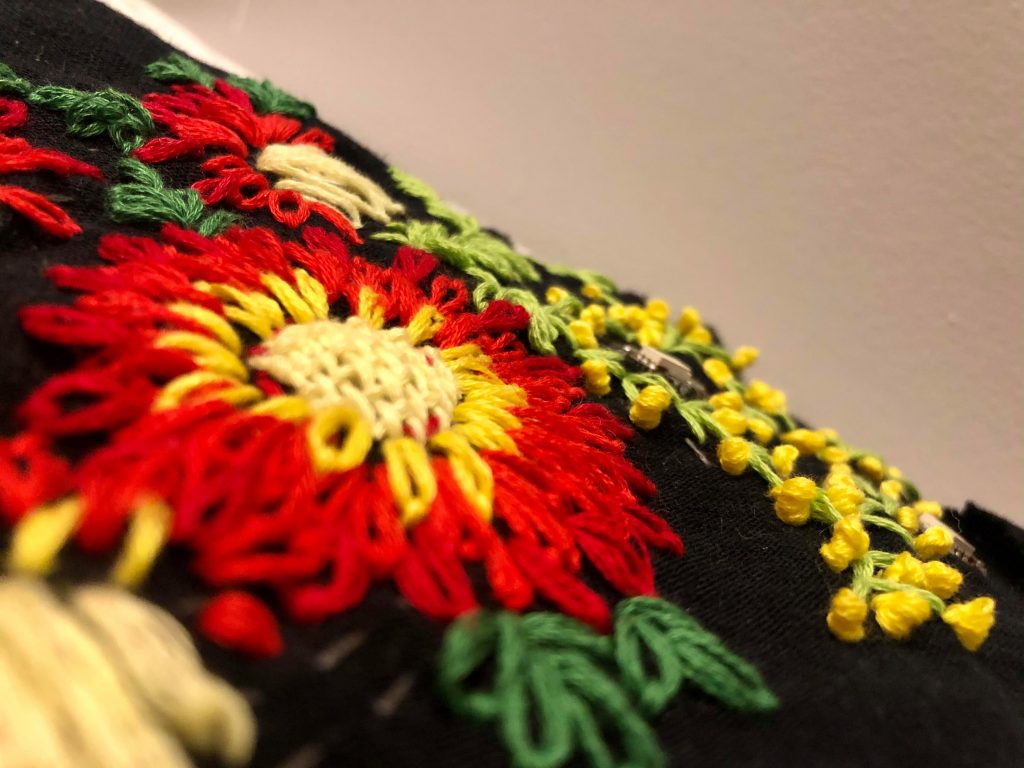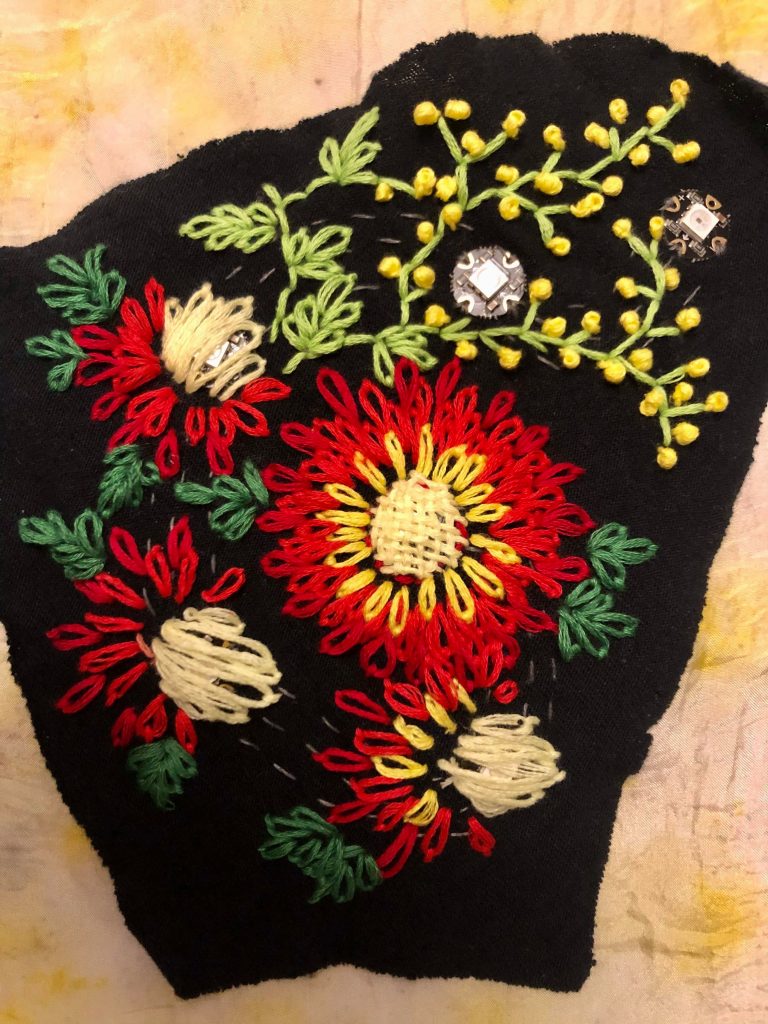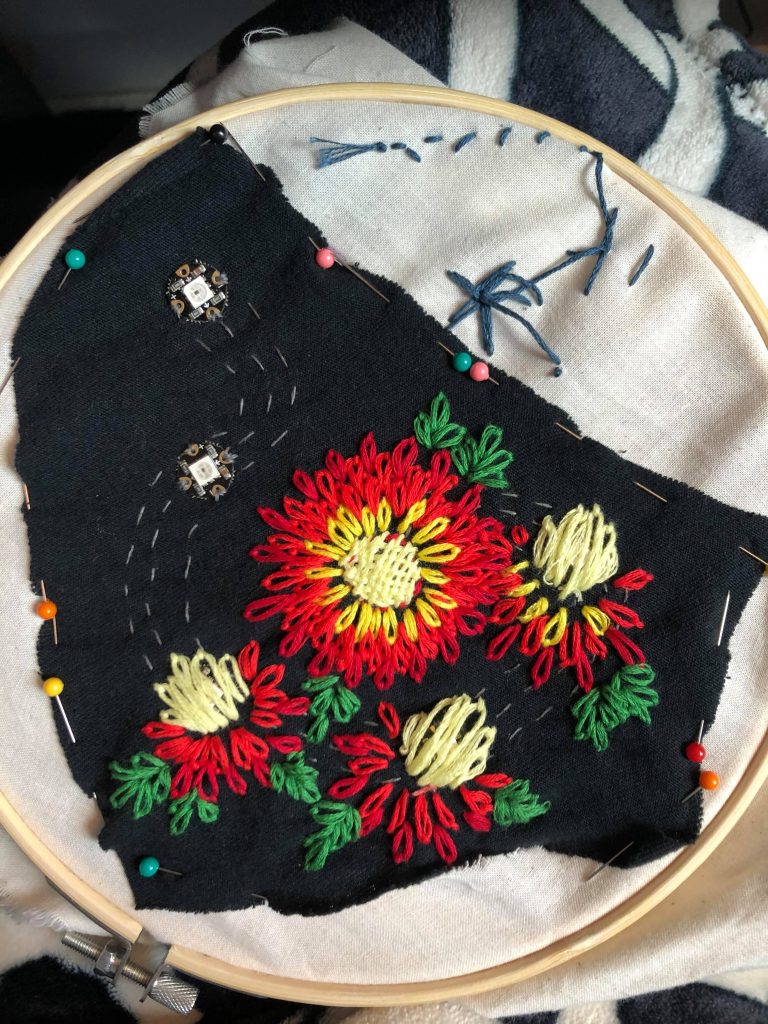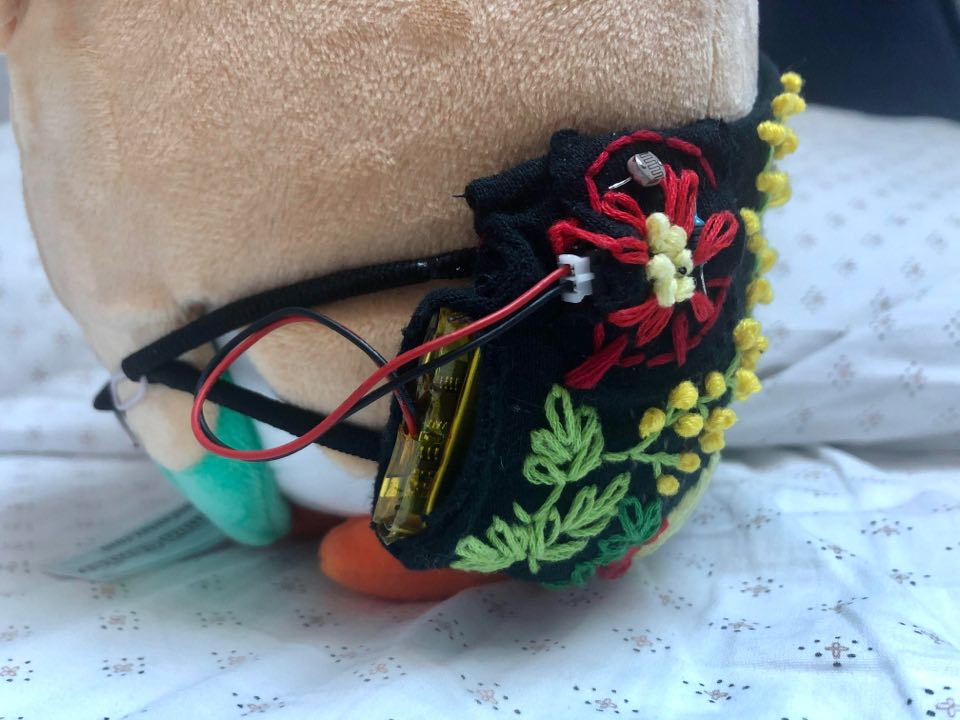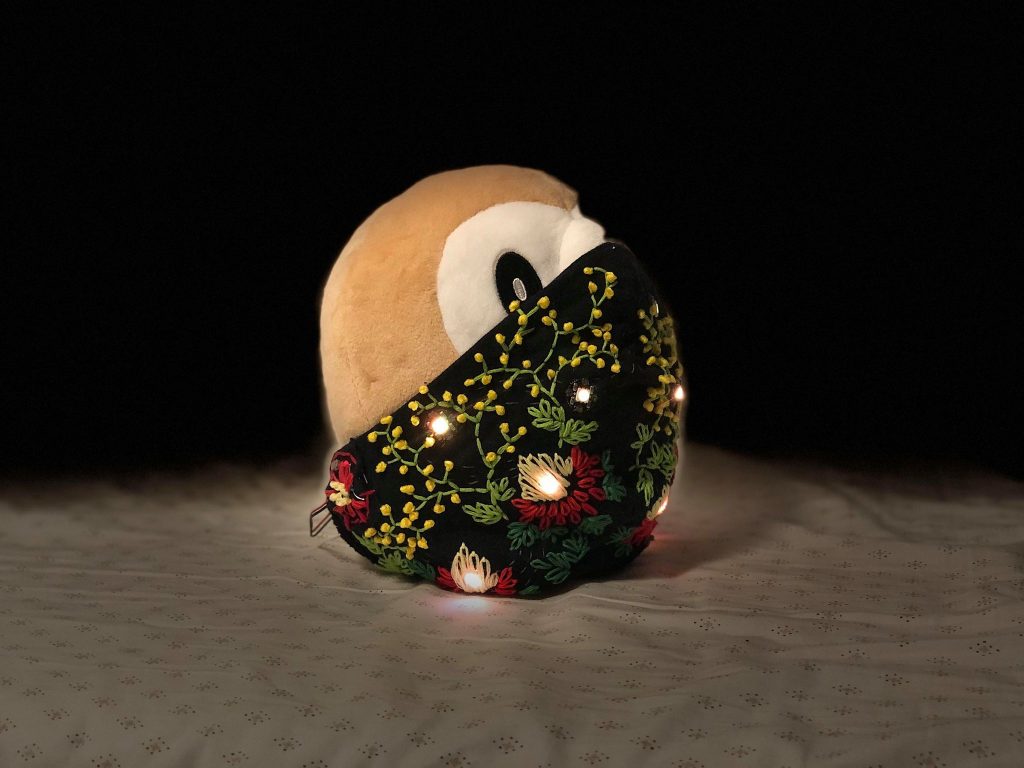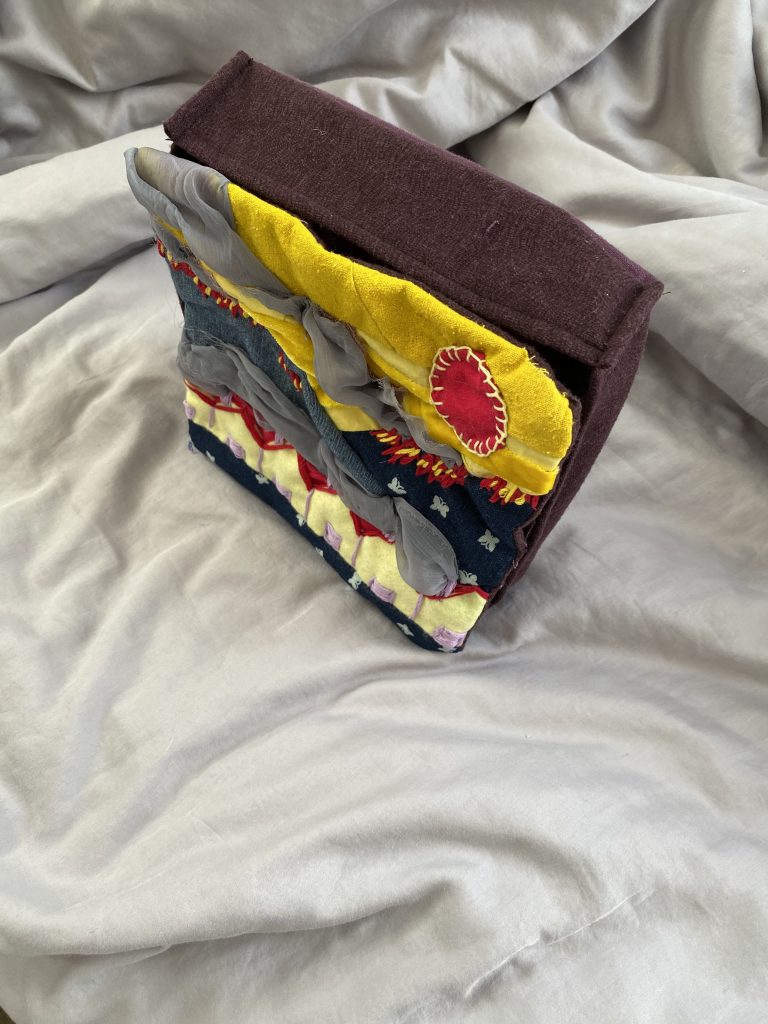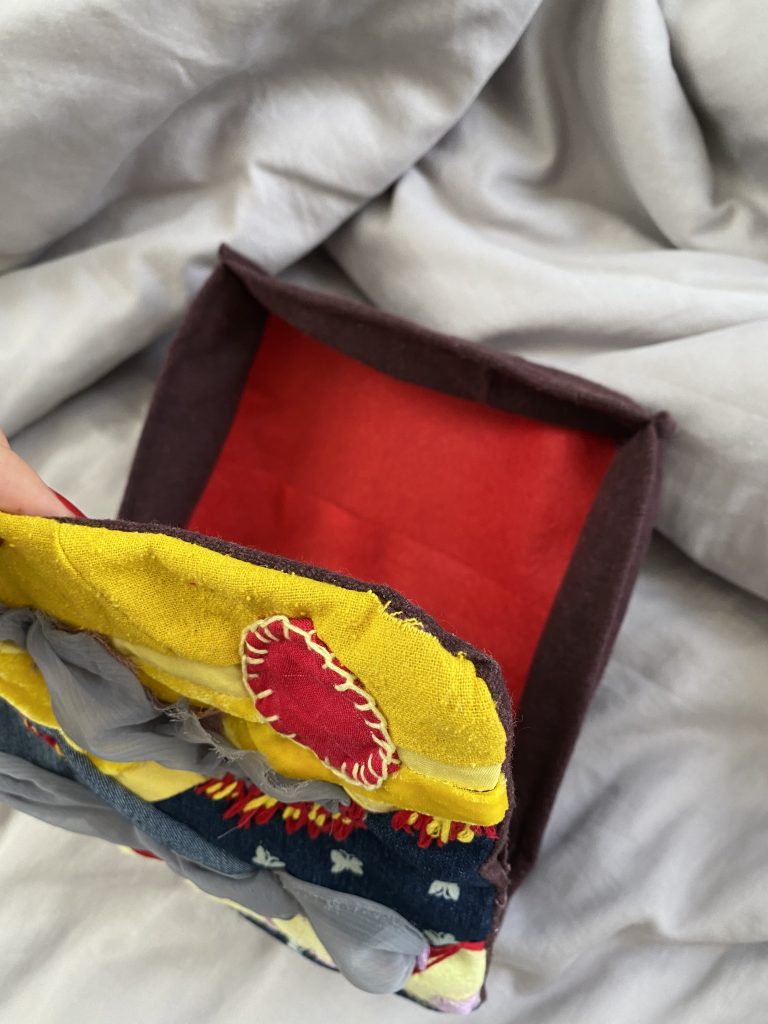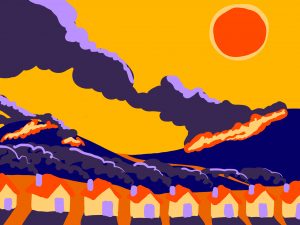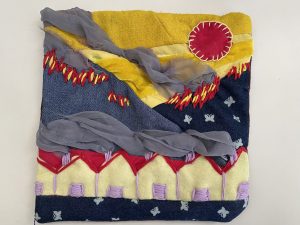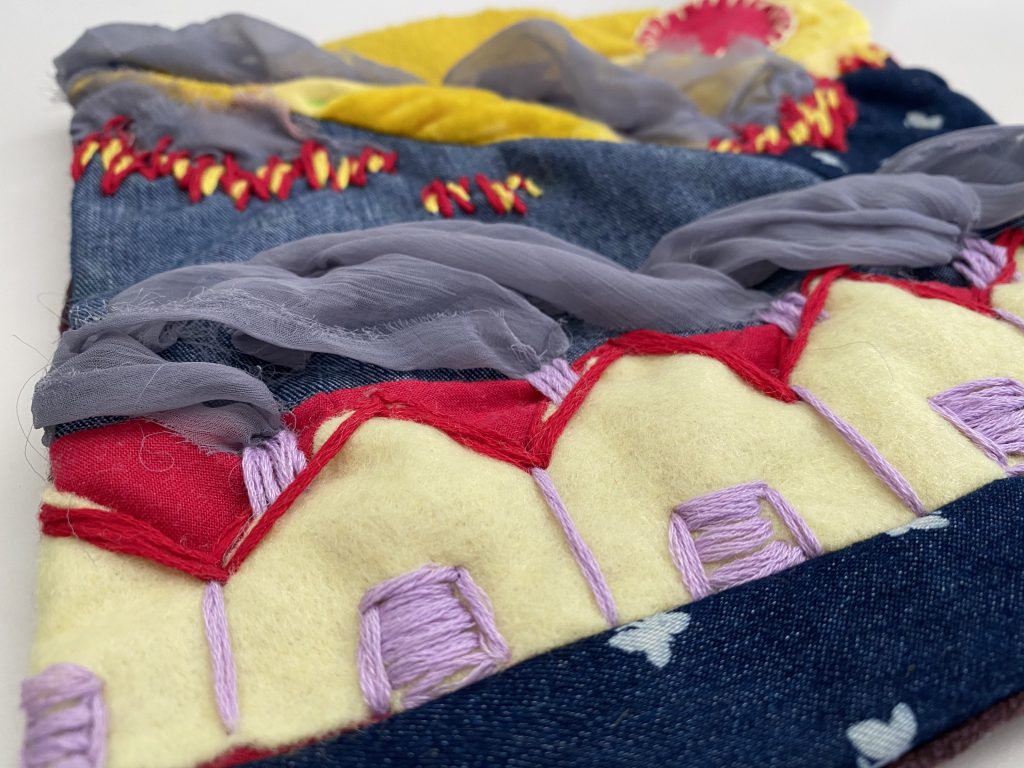My future, like many others, was split into two, one of a dystopian sprawling wasteland and one a pastoral utopia. I made two pieces, each representing one part of the world, and the way the two work together.
The first part is the corset, representing the distopia. I drafted a 1890s underbust corset pattern, and cut it entirely out of a old blazer. The lining is also the blazer lining, and the boning of the corset is from old zip ties which makes it mostly recycled.
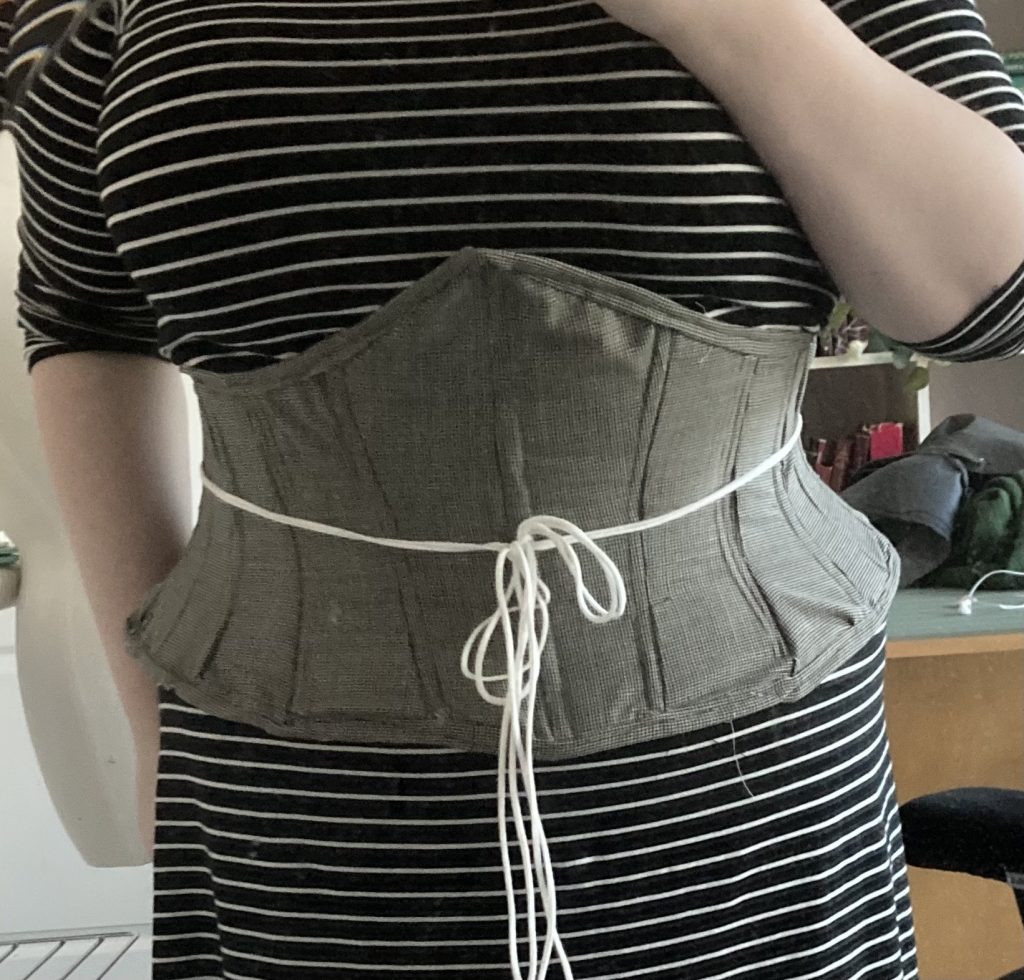
The corset is meant to look fast made. I would normally do alot of hand sewing on a project like this, but this is entireliy machine sewed, which leads to to some oddities in construction.
Normaly flaws like the ones above would be mended, but they are honestly quite loveable in the piece. The pop of the neon zip tie that lies within the bleak exterior is quite meaningful.
The corset is meant to represent the understructure, a foundation which the dress on top of it is tied to.
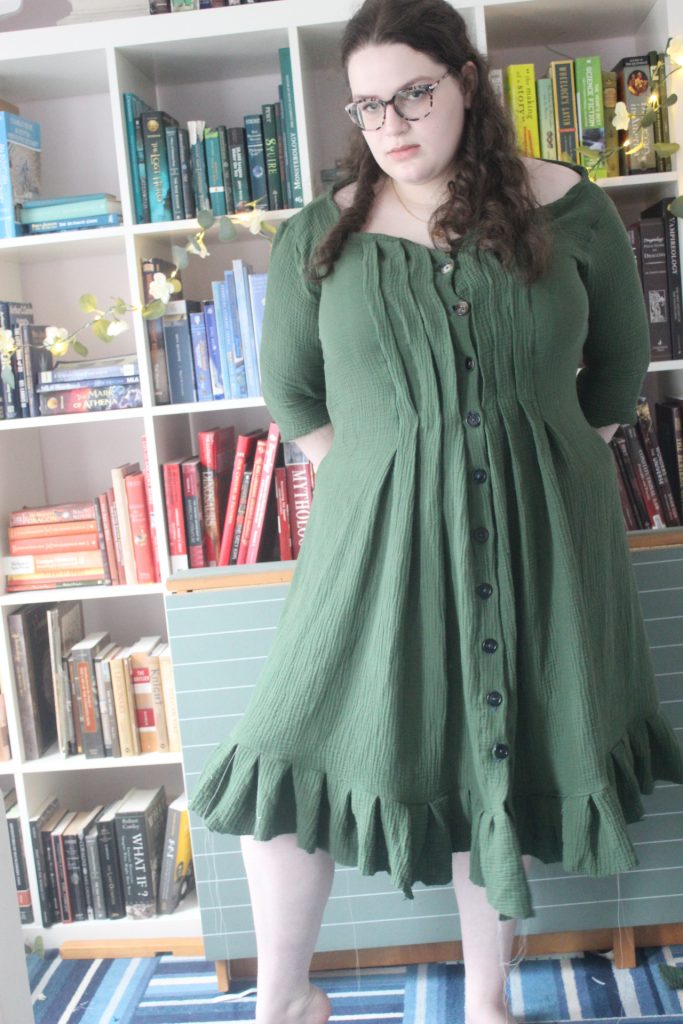
This dress was a CHALLENGE. The fabric did not want to do what I wanted it to do. So It went through quite a few iterations before it finally became this. This dress is suppossed to be nautral and pastoral. So I really tried to lean into this motif. Unlike the corset, it doesn’t pull from any historical period.
By contrast, this dress has alot of hand worked details: the finishing on the neckline is done by hand, the buttonholes are hand worked with a blanket stitch and there are a lot of pleats. The buttons that I had on hand were arranged to they fit a ombre pattern.
The overall irony of the two pieces is that this pastoral farmland haven dress is far more wasteful than they corset (and the dress is honestly more uncomfortable since the neckline is very wide). Its made of six yards of new fabric, much of its details are purely aesthetic, and it is built on the foundation of the corset.

